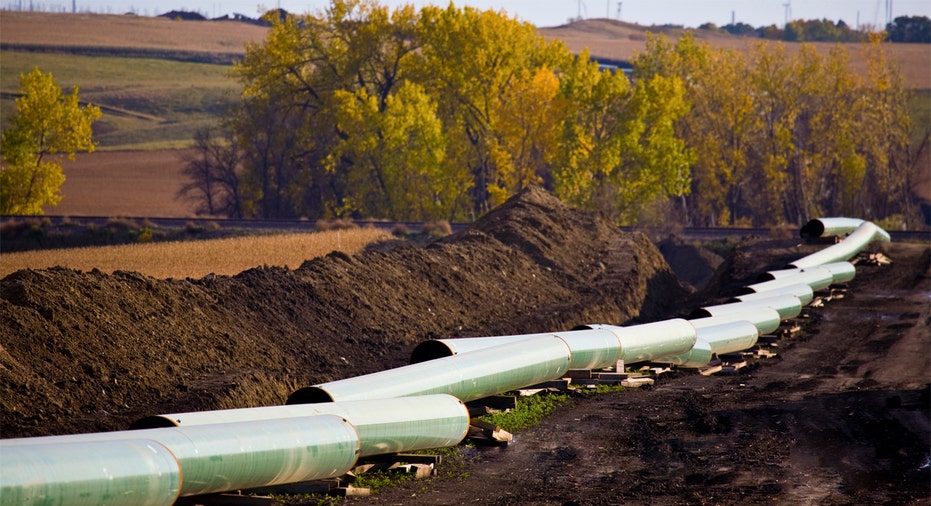TransCanada Tries Again for Nebraska's Approval of Keystone

TransCanada Corp. (NYSE:TRP) has rebooted its effort to build the Keystone XL oil pipeline across Nebraska, where it had met with opposition before it withdrew its application when the Obama administration denied the company a federal permit in late 2015.
The company filed an application Thursday with the state's Public Service Commission, executives said on a conference call with investors and analysts to discuss earnings. Nebraska had been at the center of opposition to the pipeline, largely based on environmental concerns.
TransCanada's latest move had been expected since Donald Trump was elected U.S. president. One of his first orders of business was to invite TransCanada to reapply for a permit from the U.S. State Department to allow the line to cross the border with the U.S. The company did so last month.
Keystone XL's tentative route calls for it to originate in Alberta's oil sands region, cross the U.S. border into Montana and run through South Dakota to Steele City, Neb., where it would link to existing pipelines to Gulf Coast refineries and ports.
Nebraska's permitting process, which requires a series of public hearings, could take up to a year and is expected to again draw strong opposition from residents, ranchers and farmers, as well as environmental groups. Landowners had expressed concern about use of eminent domain to seize land in the path of the pipeline.
TransCanada has said the Gulf Coast is the natural destination for heavy Canadian oil because the many refineries in Texas and Louisiana are geared to process the sludgy crude into gasoline, diesel and other fuels. The company said it is working with potential shippers on the oil pipeline to assess demand for space on Keystone XL, with some customers wanting less than they did a few years ago and others signaling they may want more.
Bold Alliance, a Nebraska-based group that opposes the line, has long maintained that Keystone makes the U.S. little more than a conduit to funnel foreign oil into the U.S. and south to ports for export, with risks of spills along the way.
"Keystone XL is a foreign-owned pipeline, using foreign steel headed to the foreign export market," said Jane Kleeb, president of the Bold Alliance. "Keystone XL is and always will be all risk and no reward."
In the years that Keystone XL was hamstrung in regulatory limbo during former President Barack Obama's tenure, the entire energy market changed. U.S. shale producers have unleashed a new wave of crude in places like Texas and Oklahoma, which are closer to the Gulf Coast, making transportation less costly than Keystone. And many refineries made long-term arrangements to buy heavy crude from countries other than Canada or from TransCanada's pipeline rival Enbridge Inc., which also operates cross-border oil pipelines from Canada.
Paul Miller, TransCanada's president of liquids pipelines, said discussions with potential customers are ongoing but have taken on a new urgency. Keystone XL's $8 billion price tag will be revised later this year, he said.
TransCanada could have the permits it needs to build Keystone by around the end of the year, but construction is unlikely to move forward until well into 2018. Building the pipeline would then take at least two years, Mr. Miller said.
The company on Thursday posted a loss for its latest quarter on a hefty charge related to the sale of its Northeast U.S. renewable-power generation business, but results still beat Wall Street expectations. TransCanada also raised its quarterly dividend 11% to 62.5 Canadian cents per share.
For the three months ended Dec. 31, the company recorded a net loss of 358 million Canadian dollars, or 43 Canadian cents a share, compared with a loss of C$2.5 billion, or C$3.47 a share, in the year-earlier period. TransCanada attributed the loss to the C$870 million write-down related to the sale of the U.S. Northeast power business.
Excluding that charge and other items, adjusted earnings rose to 75 Canadian cents per share from 64 Canadian cents for the same period in 2015. Revenue surged 27% to C$3.62 billion. Analysts polled by Thomson Reuters had expected an adjusted 72 Canadian cents a share on C$3.5 billion in revenue.



















